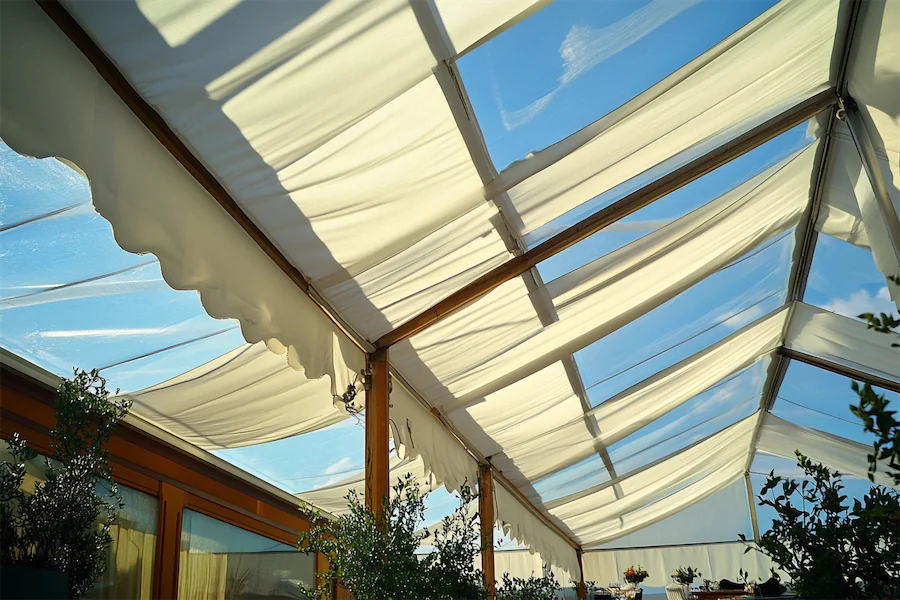A tented roof, also known as a pavilion roof, is a type of polygonal hipped roof characterized by steeply pitched slopes that converge at a central peak, resembling the shape of a traditional tent. This architectural form has been utilized across various cultures and periods, serving both functional and aesthetic purposes.
History and Origins of Tented Roofs
Tented roofs have a rich history, notably in medieval religious architecture. In 16th- and 17th-century Russia, they were prominently featured in church designs, marking a departure from traditional Byzantine architecture. These roofs, often constructed from wood or stone, provided practical benefits such as preventing snow accumulation during harsh winters. The Church of the Ascension in Kolomenskoye, built in 1532, is a prime example of a stone tented roof church.
Key Features of Tented Roofs
- Steeply Pitched Slopes: The sharp incline of the roof surfaces facilitates efficient water runoff and minimizes snow buildup, making it suitable for regions with heavy precipitation.
- Polygonal Base: Tented roofs are typically constructed over polygonal structures, such as octagonal or hexagonal plans, contributing to their distinctive geometric appearance.
- Central Peak: The converging slopes meet at a singular point, creating a prominent apex that often serves as a visual focal point and may be adorned with decorative elements like finials or crosses.
Applications of Tented Roofs
- Religious Architecture: Historically, tented roofs were prevalent in the construction of churches and bell towers, especially in Russia, where they symbolized a departure from Byzantine influences and embraced verticality in design.
- Modern Architecture: In contemporary settings, the term “tent roof” extends to modern membrane and thin-shell structures that mimic the traditional tented form, utilizing advanced materials for large-span coverings, such as those seen in airport terminals and pavilions.
Considerations When Choosing a Tented Roof
- Structural Engineering: The design requires precise engineering to ensure stability, particularly in accommodating the forces exerted by the steep slopes and central peak.
- Material Selection: Choosing appropriate materials is crucial; traditional constructions used wood or stone, while modern interpretations may employ steel, glass, or tensile fabrics to achieve the desired form and function.
- Climate Adaptation: The steep pitch is advantageous in shedding snow and rain, making it suitable for regions with heavy precipitation; however, considerations for wind resistance are also essential.
Conclusion
Tented roofs offer a distinctive architectural solution that combines historical significance with practical benefits. Their unique form not only enhances the aesthetic appeal of a structure but also provides functional advantages in various climatic conditions. Whether in traditional religious edifices or modern architectural projects, tented roofs continue to be a testament to innovative design and cultural expression.
